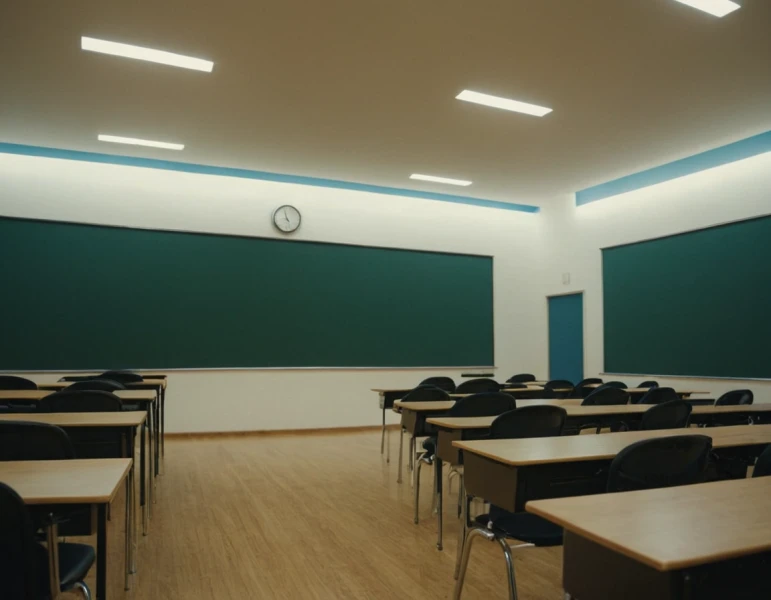Educa UNIVERSITY|EDUCATION
Secondary School: A Complete Guide from Personal Experience
Related Masters
Secondary School: A Complete Guide from Personal Experience
I am going to tell you a story that goes beyond books. I am Amadeo Pérez, and throughout my life, in one way or another, I have been linked to secondary education in Spain. The secondary schools are not just buildings with blackboards and desks; they are the place where the future of adolescents is forged, where dreams and challenges are mixed, and where, as a society, we sow what tomorrow will be.
What is a secondary school?

A secondary school is an institution that welcomes young people between 12 and 18 years of age approximately. There they study Compulsory Secondary Education (ESO), which goes from the first to the fourth grade, and then they can continue with the Baccalaureate, if they decide to follow the academic path. It is compulsory for all young people in Spain to study up to the 4th year of ESO, according to the Organic Law of Education (LOE).
My First Contact with the Institute
I remember when, as a somewhat rebellious teenager, I arrived for the first time at a high school. That change from elementary school to high school is like going from playing on the riverbank to swimming in the ocean. Everything is bigger, more complex, more serious, and, in many cases, more fun. But don't be fooled, that fun also brings with it responsibilities.
The secondary schools, especially since the LOGSE (General Organic Law of the Educational System) was implemented in the 1990s, have been fundamental in the education of Spanish youth. This reform allowed a unification of educational levels, integrating vocational training within the same structure as the baccalaureate. But beware, things did not stop there. Since then, the system has undergone some adjustments with laws such as LOE and LOMCE.
What is taught in a secondary school?
This is where the real "rock and roll" begins. The ESO covers subjects as varied as Natural Sciences to Physical Education, passing through the dreaded Mathematics and the ever-challenging Language and Literature. But beyond what appears in books, high schools are a microcosm of life. In those classrooms you learn things that are not in the official curriculum: managing social relationships, working in a team, facing failures and, of course, enjoying the first victories.
During the first two years of ESO (1st and 2nd), students are usually between 12 and 14 years old and find themselves in a terrain where common subjects such as Science, History, English and the new world of Technology, Programming and Robotics are still mixed. As they move into 3rd and 4th ESO, things get more serious, and students can begin to choose electives that will help them orient their future.
My time in high schools: a bittersweet experience
During my life, I had the opportunity to interact with several high schools as a student and then as a teacher. This is where I can tell you the reality of what goes on within those walls. At the theoretical level, high schools prepare young people for adult life, but at the practical level, they are a real school of life.
One of the biggest challenges I had as a student was the transition between ESO and Bachillerato. What a time those were! I went from seeing teachers who had known me for years to facing demanding teachers who expected me to already know how to organize my time, how to study independently, and, above all, how to overcome the fear of failure. And, my friend, let me tell you something: failure is part of success. Don't be afraid to fail. In high school, to fail is to learn.
But high school is not just for students. It is a refuge also for many of the teachers, those warriors and warriors who day after day, with more or less encouragement, face the classes. My time as a teacher taught me what patience is, what it means to change a life with words. And, above all, that a good teacher in secondary education is not only the one who teaches his subject well, but the one who knows how to see the students beyond the grades.
The current reality of high schools
Today, secondary schools have evolved. They are not the same as when I was a teenager. Now they have technology programs, subjects such as Education for Citizenship, and even entrepreneurship workshops. In some communities, such as Madrid or the Canary Islands, the programs may vary slightly, but the essence remains the same. Training citizens, not just students.
One of the biggest challenges now facing high schools is the digital divide. Many students have access to electronic devices and Internet connections, while others struggle to keep up with minimal resources. And this, believe me, makes an abysmal difference.
Final Reflection: high school as a foundation for life
Now that my time as a student is behind me and I have gone through the role of teacher, I see high school in a different way. It's a place where people are built. It's not just about memorizing dates, mathematical formulas or physical laws. It is a meeting point between childhood and adulthood, where mistakes are made, successes are had, and, above all, character is forged.
If you ask me what is the most important thing you can take away from a high school, I will tell you that it is not just academic knowledge. The most valuable thing is the ability to learn how to learn. Because, in the end, knowledge changes, but the ability to adapt and learn from any situation is what really leads to success.
Faculties
Trainings
The faculties embrace diverse academic disciplines and fields of study, opening doors to new perspectives and exploring different spheres of wisdom in a constantly evolving world.














